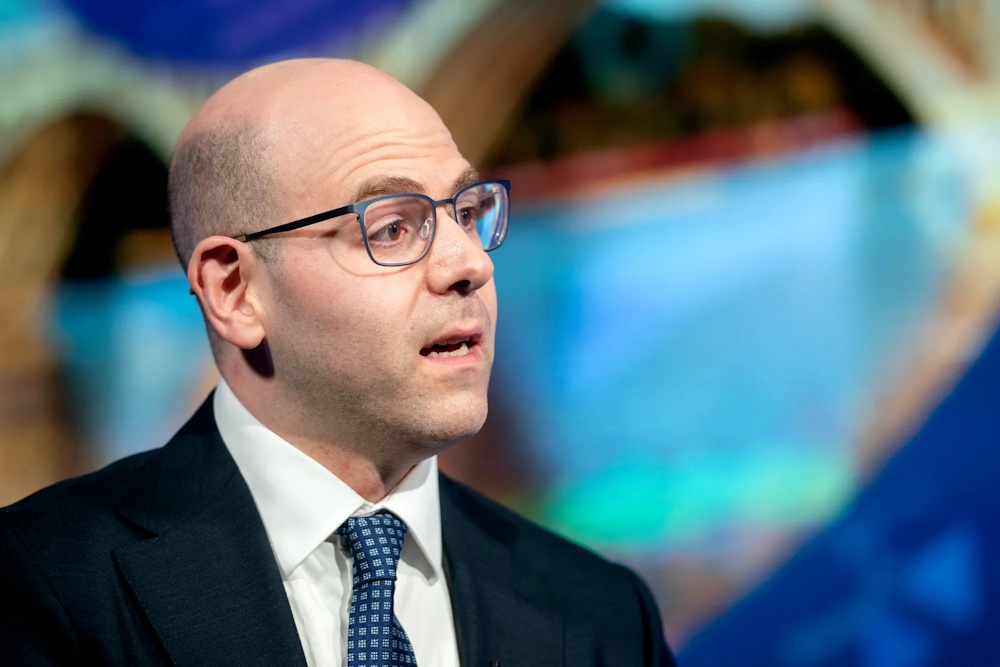
Federal Reserve Governor Stephen Miran stated on Friday, in his initial remarks as a monetary policymaker, that President Donald Trump’s extensive tariffs are not contributing to inflation. He emphasized the need for a swift reduction in interest rates to avert a decline in America’s labor market. The Fed on Wednesday announced a quarter-point rate cut, marking the first reduction in nine months, aimed at mitigating the risk of rising unemployment. During a news conference, Fed Chair Jerome Powell referred to it as a “risk management cut,” indicating that the Fed is not lagging behind.
Miran, however, holds a differing opinion. He stood as the sole dissenter regarding the Fed’s recent decision, advocating for a substantial, half-point reduction instead. His appointment has introduced a fresh perspective to the Fed — one that embraces unconventional economic views — advocating for significant rate cuts in the upcoming months. During an interview on Friday morning, Miran downplayed the potential impact of Trump’s tariffs, using that as his primary rationale for supporting a half-point cut, while also highlighting the fragile condition of the job market. “I don’t see any material inflation from tariffs,” Miran stated, noting that the prolonged period of “very restrictive” borrowing costs indicates that “the greater the risks build up… to the employment mandate.” Miran, who serves as Trump’s leading economic adviser, was officially sworn in just one hour prior to the commencement of the Fed’s meeting on Tuesday, following a prompt confirmation process facilitated by Republicans. Typically, when a Fed governor dissents, a statement is released through the central bank two days later to outline their rationale. However, Miran has opted to present his reasoning during an upcoming speech in New York on Monday.
The newly appointed Fed governor is in the process of acclimating, “I literally just got here a few days ago.” Miran stated that Trump reached out to him on the day of his swearing-in to offer congratulations, noting that the president did not request him to “commit to doing any particular actions.” Miran emphasized his commitment to developing independent assessments regarding the economy. “Everybody was extremely welcoming” at the Fed after he was sworn in, Miran stated, despite the unprecedented pressure Trump continues to exert on the central bank, including an ongoing push to oust Fed Governor Lisa Cook. “The environment was highly collaborative, and I truly valued that, including the contributions of Governor Cook,” Miran stated. On Monday, Miran is set to present a keynote address at a luncheon organized by the Economic Club of New York, where he will “give a full accounting for my economic views and walk through in meticulous detail the economics and the arithmetic behind getting to those numbers.”
When Fed officials released their latest dot plot on Wednesday — a graph illustrating their projections for the benchmark lending rate in the upcoming years — one projection stood out as significantly lower than the others for 2025, indicating that this individual anticipates aggressive rate cuts by the end of the year. Miran confirmed that the dot was indeed his. “That was me,” he stated. By various indicators, the labor market in America has shown signs of deterioration since the start of the year. Job growth has been sluggish; currently, there are more individuals unemployed and looking for work than available job openings; additionally, in August, the count of those unemployed for over 26 weeks hit its peak since November 2021. However, those indicators ultimately failed to persuade the Fed to implement the half-point reduction that Miran supported. Powell informed reporters that despite the labor market showing signs of softening, the outlook is not entirely negative. “It’s important to note that the unemployment rate stands at 4.3%.” The economy is expanding at a rate of 1.5%. “So it’s not a bad economy, or anything like that,” Powell said. “We’ve seen much more challenging economic times.”
Powell has often emphasized the significance of the unemployment rate in shaping policymakers’ views on the labor market. In the previous year, the Federal Reserve implemented a significant half-point reduction, primarily as a reaction to the rapid rise in unemployment within a brief timeframe. This situation is different this time. Since January, the unemployment rate has consistently fluctuated within a tight band of 4% to 4.3%. However, the Fed chief on Wednesday cautioned that if layoffs begin to increase, individuals who become unemployed will probably face challenges in securing new employment. “The concern is that if you start to see layoffs, there won’t be a lot of hiring going on,” Powell stated.

